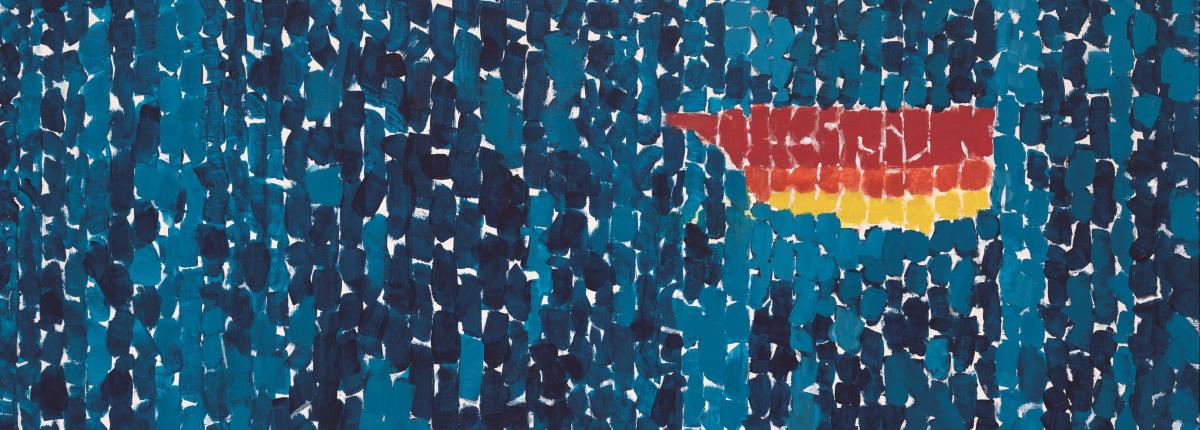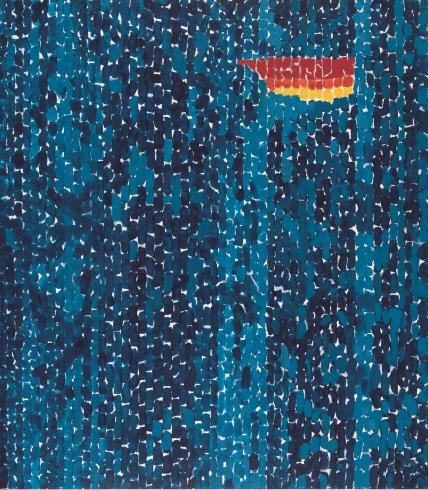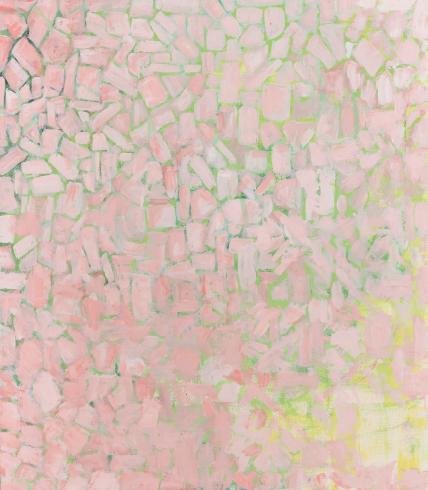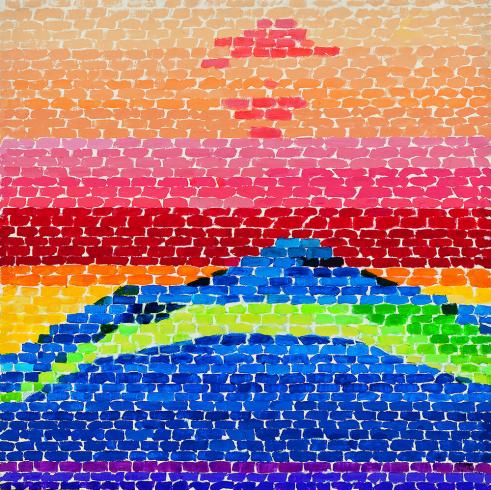Art and Nature: The Work of Alma Thomas

Part 1: Let’s Discuss Nature
IDENTIFYING Nature:
- Ask students:
- What is nature?
- What are some examples of things we find in nature?
- What do you feel when you’re in nature?
- Read Outside In to students or show them the read aloud online.
- Before reading, ask students to:
- Pay attention to the colors they see in the illustrations.
- Listen for ways “Outside” reminds us that it is always there, even when we’re inside.
- After reading, ask students:
- What are some ways “Outside” reminds us that it is always there?
- What are some examples of things we use that are made of something we might find in nature?
- What colors did the illustrator use to show us different parts of nature? Can you give an example from the book?
Part 2: Exploring Nature
Explore:
- Share with students that today they will learn about an artist named Alma Thomas who loved to paint nature. More importantly, she didn’t just paint what she saw, but how she felt when she looked at nature.
- Make sure students understand what is meant by “nature.” Ask students to provide examples of nature. Examples include plants, animals, and anything of the earth that is not created by people.
- Show students Thomas’s painting titled Ruth Kainen’s Amaryllis. Ask students:
- How do you feel looking at this painting?
- What colors do you notice?
- What do those colors remind you of in nature?
- What do you think inspired Alma Thomas to make the painting?
- Teacher Notes:
- Students may not guess that this was inspired by flowers (let alone the amaryllis flower in particular!). Instead, the goal is to have them use their reasoning skills and provide evidence. For their responses to this question, you may want to follow-up with What do you see that makes you say that? to have students provide visual evidence and deepen their critical thinking skills.
- For this painting, Thomas was inspired by the trumpet shape of the amaryllis flower. You may want to show them a picture of this flower (or even bring in a live one!). Click on the images on the bottom of the lesson to learn more about the artwork.
- You may have to define “inspired” for students. Inspire means something that makes you want to create or that makes you feel an emotion.
- Teacher Notes:
- In partners, give students the I Spy, With My Little Eye: Nature!.
- As a whole class, reflect on each partner’s responses to the questions.
Discover:
- Explain to students that Alma Thomas found beauty in nature and it inspired her to create art. Share with students that they will take a nature walk and use their senses to help inspire their own artwork.
- Ask students:
- What are the five senses?
- What are some things you may see in nature?
- What are some sounds you might hear in nature?
- What are some things you may smell?
- What are some things you might feel?
- What tastes might you experience in nature?
- Take students out for a nature walk. Remind them that they should pay attention to what they see, smell, hear, and anything they may feel. They should not touch anything without asking first, and they should not eat anything on the walk, but they can use their imaginations to discuss what something might taste like.
- On the walk, students should use the following Nature Walk guide to help them prepare for their artwork.
- CONNECT: When you return, on a sheet of chart paper write down student responses to the following questions:
- What colors did you see?
- What else did you see?
- What did you smell?
- What did you hear?
- What did you feel?
- What tastes did you imagine you might taste?
- Explain to students that they can use these different experiences to create their own art inspired by nature.
Part 3: Create Your Own Art Inspired by Nature
- Remind students that they have learned about Alma Thomas, her love of nature, and how nature can inspire us to create art.
- Students should pick one thing they saw on the nature walk that inspired them.
- Explain to students that instead of trying to create that thing exactly as they saw it, try to capture it by thinking about how they felt when they saw it. Ask:
- Did it make you happy? What colors can you use to show happiness?
- Did it make you sad? What colors can you use to show sadness?
- What other emotions did you feel?
- Allow students to create their nature-inspired art using crayons, markers, or paint.
- To reflect on their artworks, provide the following instructions to students:
- Swap your artwork with a partner.
- Ask yourself:
- How do I feel when I look at this painting?
- What do I think inspired this painting?
- Give your partner’s artwork a creative title!
Additional Context
Lesson Context
Alma Thomas loved nature. It inspired her to create art. Howard University, her alma mater, asked her to create some pieces for an exhibition they wanted to do of her work in 1966. Thomas turned to nature. In fact, when she was looking for inspiration for the exhibition, she looked right outside her front bay window and said:
“I sat down right in … that red chair in my living room, and I looked at the window. And you can see exactly what I saw, right before my eyes, from where I was sitting in the chair. Why, the tree! The holly tree! I looked at the tree in the window, and that became my inspiration…. And every morning since then, the wind has given me new colors through the windowpanes.”
Even as she looked at the same things, she saw them differently each time, allowing her art to capture her feelings and experience in that particular moment. Thomas often talked about “watching the leaves and flowers tossing in the wind as though they were singing and dancing.” Her art illuminated both the permanence and impermanence of the natural world.
Key Terms
Nature: the physical world, which includes plants, animals, landscape, and anything of the earth as opposed to objects created by people.
Senses: the way the body experiences the outside world. There are five senses: sight, smell, hearing, taste, and touch.




